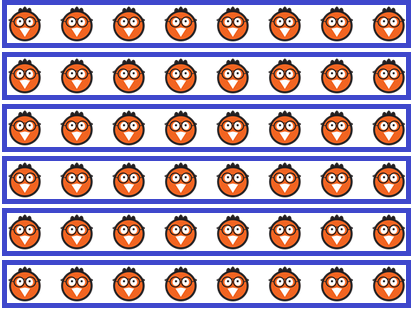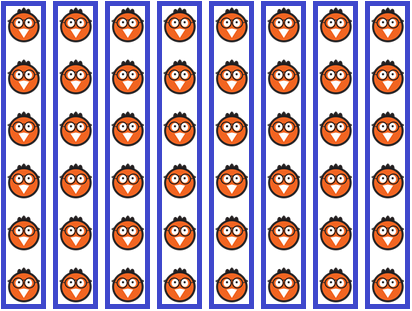When a number is added to itself multiple times, this is called repeated addition.
A multiplication problem can be thought of as a repeated addition problem
where the first factor is the number of times the second factor is added.
The problem shown is the sum of nine 3's.
Repeated addition can be represented by multiplication.
The sum of nine 3's can be represented by 9 × 3.
Multiply or add to solve the problem.
3 + 3 + 3 + 3 + 3 + 3 + 3 + 3 + 3 = 27
An area model can be used to represent multiplication.
|
| The number of rows is the first factor. |
| The number of columns is the second factor. |
| The product is the area of the model, which can be found by counting the number of squares it is made up of. |
An area model can be used to represent multiplication.
The number of rows multiplied by the number of columns equals the area of the model, or the number of squares it is made up of.
This area model has 4 rows, 5 columns, and an area of 20 squares.
So, the number sentence 4 × 5 = 20 matches the area model.
Skip counting can also be used to model multiplication.
Skip count by the second factor the number of times given by the first factor.
One way to multiply two numbers is to use skip counting.
Find 7 × 3 by skip counting by 3's seven times.
So, 7 × 3 = 21.


 3rd Grade Math - Model Multiplication & Division Lesson
3rd Grade Math - Model Multiplication & Division Lesson





